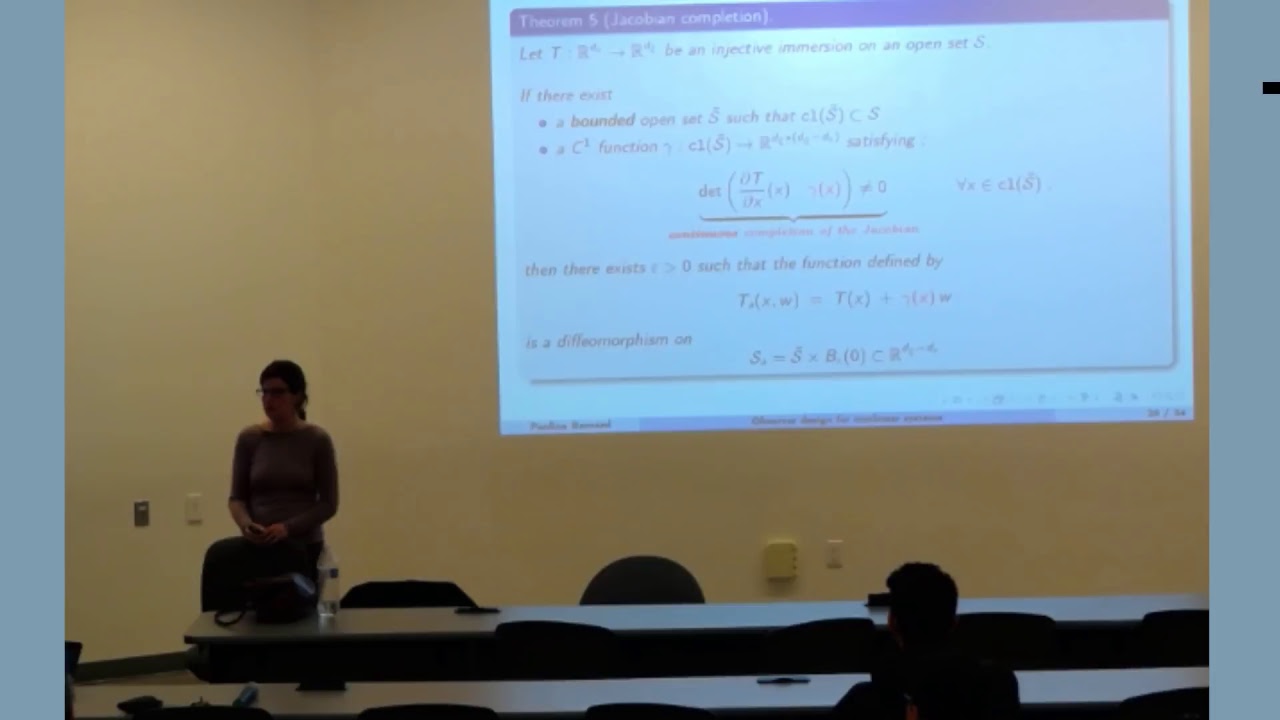CPSRC – UCSC
Observer Design for Nonlinear Systems
Dr. Pauline Bernard, UCSC, Post-Doctoral Researcher
Unlike for linear systems, no systematic method exists for the design of observers for nonlinear systems. In fact, observer design may be more or less straightforward depending on the coordinates we choose to express the system dynamics. In particular, some specific structures, called normal forms, have been identified for allowing a direct and easier observer construction. It follows that one can look for a reversible change of coordinates transforming the expression of the system dynamics into one of those normal forms, design an observer in those coordinates, and finally deduce an estimate of the system state in the initial coordinates via inversion of the transformation. This talk gives contributions to each of those three steps.
First, we show the interest of a new triangular normal form with continuous (non-Lipschitz) nonlinearities. Indeed, some systems may not be transformable into the standard Lipschitz triangular form, but rather into an “only continuous” triangular form. In this case, the famous high gain observer no longer is sufficient, and we propose to use homogeneous observers instead.
We also show how the “Luenberger” design, consisting in transforming the system dynamics into a Hurwitz linear form based on the resolution of PDE, can be extended to time-varying/controlled systems.
As for the inversion of the transformation, this step is far from trivial in practice, in particular when the domain and image spaces have different dimensions. When no explicit expression for a global inverse is available, numerical inversion usually relies on the resolution of a minimization problem with a heavy computational cost. That is why we have developed a method to avoid the explicit inversion of the transformation by bringing the observer dynamics (expressed in the canonical form coordinates) back into the initial system coordinates. This is done by dynamic extension, i.e. by adding some new coordinates to the system and transforming an injective immersion into a surjective diffeomorphism.
Source


